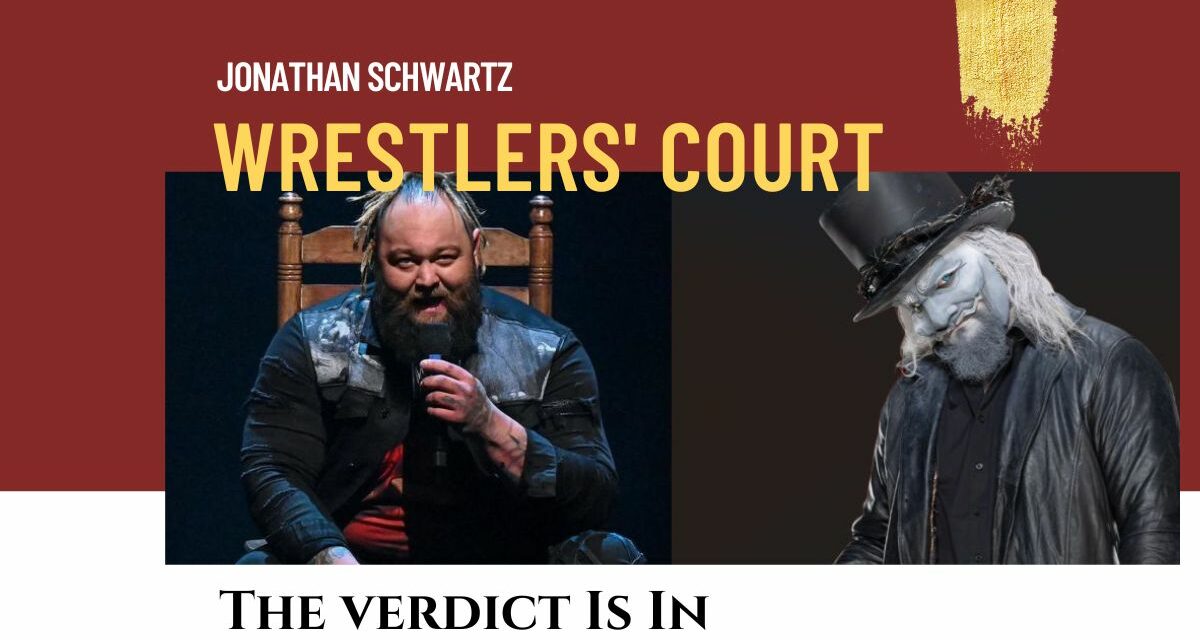On Saturday, May 25 WWE will present its latest Saudi Arabian Premium Live Event (PLE), the awkwardly-named yet inclusive King and Queen of the Ring.
The Saudi events have been noteworthy since they began in 2014. They reflect the Saudi Ministry of Sport’s interest in maximizing spectacle and drawing positive attention to the Kingdom. They pay WWE handsomely for the privilege of hosting their events. A cynic might call this ‘artwashing’. That would mean calling WWE ‘art’, which some readers might find a stretch. That is a story for another day.
In any case, the WWE-Saudi partnership has resulted in a weird mix of significant storyline developments, which often irk the North American fanbase since they seem intended to pop the local crowd at the expense of logic, and matches/booking decisions that fall outside continuity, like the Greatest Royal Rumble or Shawn Michaels coming out of retirement for a geriatric tag team match alongside Triple H against the Undertaker and Kane. The resurrected King (and now Queen) of the Ring tournaments are the latest examples, along with the presumed main event of the show featuring WWE Champion Cody Rhodes fighting internet darling and US Champion Logan Paul.
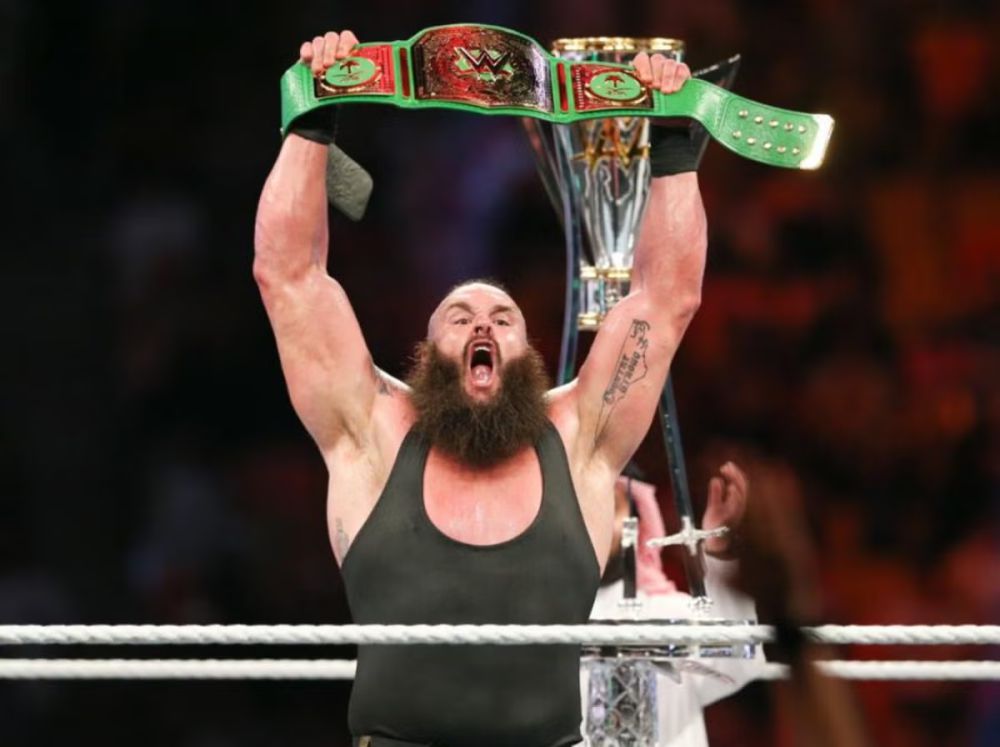
Truth be told, I’m less interested in the card itself than in rumors projecting this PLE as the debut of a new faction in tribute to an old friend.
In case you missed it, for the last several weeks RAW and SmackDown have seen a number of technical ‘glitches’: snippets of sound or images jump-cut into the live broadcast like Tyler Durden splicing adult film frames into Disney movies.
These ‘blips’ have become increasingly frequent and intrusive, to the point that commentators mention them on-air. Last week they linked to a 55-minute film and took over one of WWE’s social media feeds. Inside arenas during commercial breaks music filters through the public address system and screens are overtaken with weird images. Enterprising and tech-savvy viewers are catching QR codes, which direct readers to a series of short videos and puzzles which point to the return of Bray Wyatt’s underdeveloped foil, Uncle Howdy. Howdy will likely be joined by a stable that includes superstars like Nikki Cross, Joe Gacy, Dexter Lumis and Erik Rowan. Howdy, played by Taylor Rotunda (Wyatt’s real-life brother, previously known as Bo Dallas) makes five of the purported ‘Wyatt 6’, a faction that we never got to see during Windham Rotunda’s abbreviated last WWE run. Presumably, Wyatt would have been the sixth member.
Uncle Howdy and his retinue are forecast make their presence known at King and Queen of the Ring, kicking off a storyline that will either build on Wyatt’s legacy or destroy it.
A quick note: I will refer to Windham Rotunda when discussing the man who was the creative force behind the “Bray Wyatt” character. I will use “Bray Wyatt” when discussing the character in-universe.
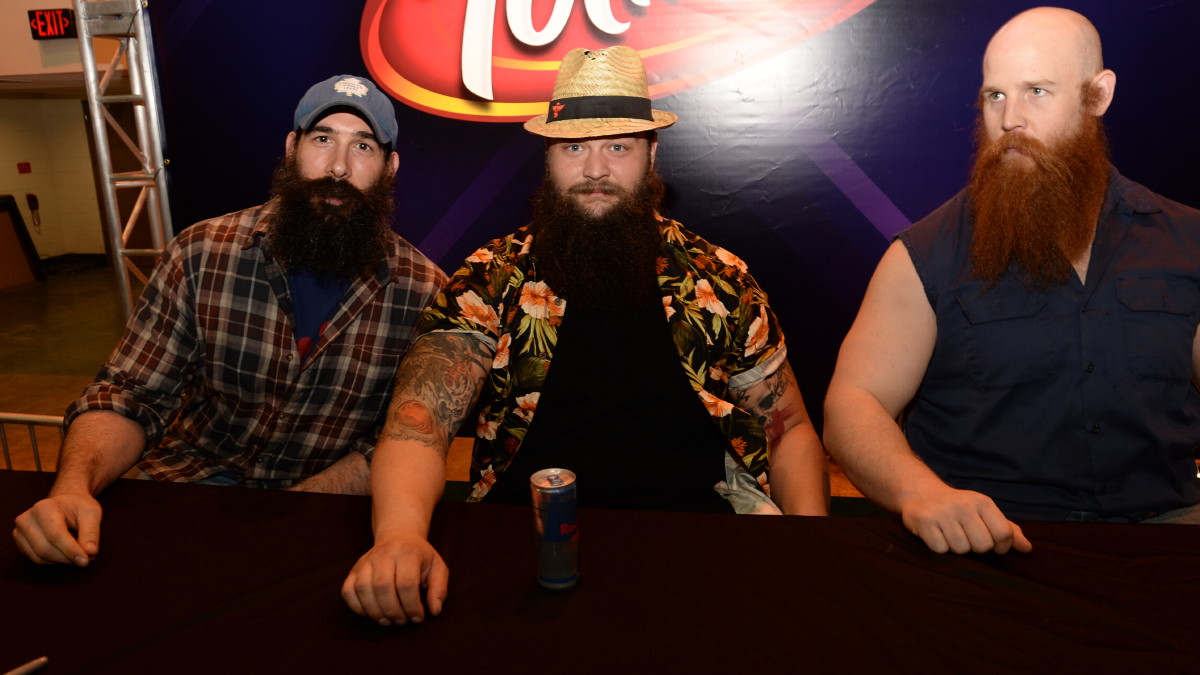
The Wyatt Family at WrestleMania 30 Fan Axxess.
The teasers are familiar. In September 2022, Windham Rotunda was rehired by WWE after his release in the summer of 2021. WWE used a similar series of vignettes leading to his in-ring return. They played a haunting recording of Jefferson Airplane’s “White Rabbit” at house shows and during commercial breaks TV tapings. The QR codes appeared as well, foreshadowing Wyatt’s emergence at the Extreme Rules PLE in October.
What followed was a series of promos-always Rotunda’s strength as a performer-and an incredibly slow burn that presumably would have led to another chaotic chapter in Wyatt’s character arc. “Uncle Howdy” showed up a few times to assault Wyatt, but the characters’ on-screen relationship had yet to be established.
Instead, we got a short feud with a still-heel LA Knight and what has been called a ‘passing of the torch’ moment between The Undertaker and Wyatt.
Wyatt was scheduled to feud with Bobby Lashley through WrestleMania 39. Rotunda disappeared from television in February amid reports that he was suffering from an illness. He was reportedly getting ready to return to action when he passed away on August 24 from a heart attack after he had contracted COVID-19. He was 36 years old with a young family, including four children.
Rotunda’s death hit me harder than most. To outside appearances he was young and healthy. He was survived by his parents, his partner and his kids. As a parent his death just felt wrong. No parent wants to outlive a child, and every child deserves to have their parents by their side as they grow up. Worse, reports suggest that his death may have been preventable. Rotunda had been given a defibrillator after his heart was damaged by COVID. He is reported to have died in his sleep at home; the defibrillator was found in his car.
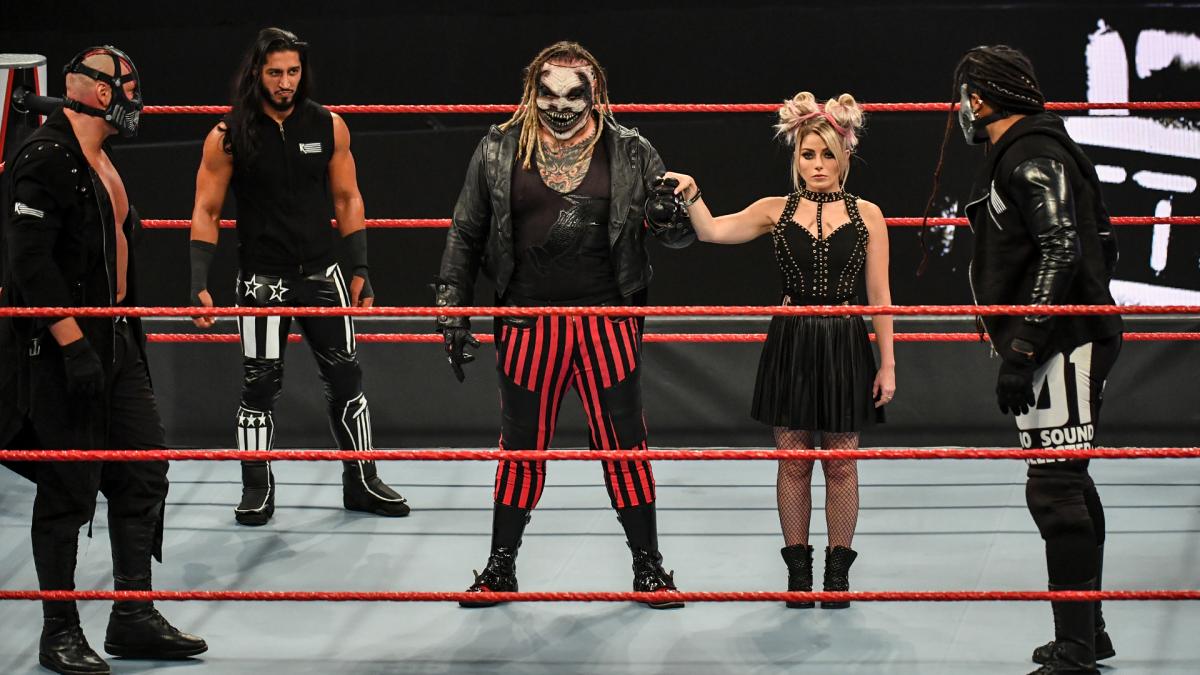
The Fiend and Alexa Bliss. WWE photo
Far less important, I was a huge fan of Rotunda’s work. I appreciated that he was trying something new — a challenge in a business marked by repetitive storylines and stock characters. Bray Wyatt was immersed in genre fiction. As an avid reader of anything from Westerns to Science Fiction to Horror, I loved how many references Rotunda wove into his character. Wyatt sold me on the strength of his “Eater of Worlds” tag line, borrowed from the interdimensional demon Pennywise in It, and a throwaway line in a Luke Harper promo in which his slovenly truck driver acolyte called out “My life for you!” a line taken from the Trashcan Man in King’s The Stand. Wyatt’s finisher, Sister Abigail, shares its name with a character from the film Orphan. The Fiend’s catchphrase “Let Me In” is a tagline from recent Australian horror classic The Babadook. Wyatt’s most recent theme music contains a callout to 1980s teen vampire flick The Lost Boys. At one point he sold a T-shirt that bore the image of a tentacled monster somewhere between Hentai and H.P. Lovecraft’s eldritch horror creation Cthulhu (I bought that one). Even the grinning mask used at points by Wyatt and Uncle Howdy bears a strong resemblance to props used in The Black Phone — based on a Joe Hill short story (Hill is also Stephen King’s son, and a very fun horror writer in his own right). I’m sure I missed a bunch over the years.
Rotunda developed his “Fiend” character with a view to long-term storytelling; he engaged screenwriters to bring that vision to life. He created the look of his character alongside horror makeup’s greatest practitioner, Tom Savini. According to the WWE’s biography Bray Wyatt: Becoming Immortal, Rotunda was planning to bring back a modified version of the Fiend. I regret that the well of his creativity has run dry.
Wyatt’s genre-driven inspiration stood apart from the morality play of professional wrestling. It felt like Wyatt joined WWE from a parallel universe. Most wrestling villains are broad caricatures designed to be hated then discarded as the next challenger comes up: the evil foreigner, the evil rich guy; the evil sexually-ambiguous dude, the evil wildman. Wyatt looked the part: big, bearded, covered in tattoos, but like Bruiser Brody before him (another wrestler who never quite fit in to the mainstream WWE mold and died too soon), he portrayed an intelligent monster. I don’t think that WWE ever really understood the character, which became a source of frustration for Rotunda and management.
Horror stories and villains are different from pro wrestling tropes. Their evil is appealing. The first literary villain was Satan, portrayed as sympathetic in Milton’s Paradise Lost all the way back in 1667. More recently, consider Thomas Harris’ cannibalistic psychologist, Dr. Hannibal Lecter, who moved from a peripheral character to the star of a series of novels.
A horror villain needs to rope in the hero, seduce the leading lady, or raise an army to do his bidding. Wyatt built his first army in NXT with Luke Harper and Erik Rowan and Braun Strowman (and before them, Eli Cottonwood, who never made the main roster). He drew Daniel Bryan into a hot angle that blossomed into the ‘Yes’ movement. He feuded extensively with Roman Reigns. When Reigns was diagnosed with leukemia, Rotunda sent his well-wishes via Twitter, outing himself as The Joker to Reigns’ Batman. Eventually, during a feud with Braun Strowman (which somehow turned the then-babyface Braun heel) he enchanted Alexa Bliss.
In many horror stories the villain sees himself as righteous, acting for a higher cause or out of justified rage against those who have done him or her or it wrong. Friday the 13th’s Jason Voorhees and Nightmare on Elm Street’s Freddy Kreuger began as revenge stories. Hallowe’en baddie Michael Myers is an exception. He was consciously depicted as pure unmitigated, baseless evil. I won’t argue with the success of the franchise, but I do think that makes him a less interesting character.
Conventional pro wrestling heels serve as roadblocks for a babyface standard bearer. They are disposable stereotypes who make their way up the card before the conquering hero banishes them back down to the prelims. Horror differs from other genres in that the bad guys often win (or at least survive to maim another day). Classic horror films like Rosemary’s Baby, The Omen or Alien end with most of the good guys dead before an impending apocalypse, whether driven by evil spirits or extraterrestrials. John Carpenter’s The Thing ends with the audience unsure which of two characters is a murderous shape-shifting alien but understanding that the most likely outcome is that evil wins. Just about every George Romero zombie movie ends the same way; the few survivors escape their predicament only to fall into certain brain-eating death.
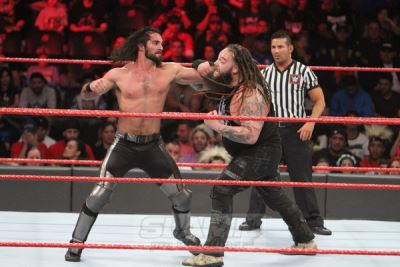
Seth Rollins battles Bray Wyatt
In scary books and movies the villain recurs while the hero is disposable, replaced by another in a series of do-gooder chumps. This is what WWE failed to understand about Bray Wyatt. Typical pro wrestling angles require good to triumph over evil: Wyatt’s evil flouted those conventions which WWE took to mean that he could be beaten serially. Wyatt’s losses didn’t fit with his genre. In the universe that bore him, evil should have won. The most egregious misunderstanding of this character came during the Fiend’s feud with Seth Rollins, where a Hell in the Cell match devolved into a no contest since the Fiend, like Jason or Myers or Freddie, was portrayed as indestructible. WWE storytelling broke its own rules to bring that character to heel.
I am conflicted about the prospect of reviving the world Rotunda created, promoting his storyline foil Uncle Howdy to main character and relaunching him alongside a new faction. It feels inherently distasteful and without Rotunda’s understanding of the character I don’t know how they will get it right, even with a regime change and an apparent commitment to better, more complex storytelling. Without Windham Rotunda to push back, I have less confidence in WWE’s ability to look outside its own universe to find new ways to tell stories.
But then, as I will show in my next column, stranger things have happened.
TOP PHOTO: Bray Wyatt and Uncle Howdy. WWE photos
RELATED LINKS
